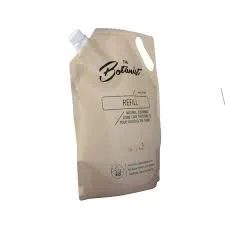The Art of Drying Cannabis for Optimal Flavor and Potency
Understanding the Drying Process of Weed Key Factors and Techniques
The drying of cannabis, commonly referred to as weed, is a crucial step in the cultivation process that significantly impacts the quality, potency, and flavor of the final product. Proper drying not only preserves the active compounds in the plant but also enhances its overall appeal and market value. This article explores the essential techniques and factors involved in drying weed effectively.
The Importance of Drying
Drying cannabis is essential for several reasons. First, it reduces the moisture content in the buds, which is vital for preventing mold and mildew growth during storage. If weed is not dried adequately, it can develop harmful pathogens that compromise both safety and quality. Secondly, drying enhances the potency of the marijuana by allowing for the preservation of cannabinoids and terpenes. These compounds are responsible for the plant's effects and distinct aromatic profiles. Lastly, drying cannabis improves its appearance, aroma, and taste, making it more desirable to consumers.
Factors Affecting Drying
1. Temperature and Humidity The ideal temperature for drying weed is between 60°F to 70°F (15°C to 21°C), with humidity levels around 45% to 55%. High temperatures can cause the terpenes to evaporate, diminishing flavor and aroma, while excessive humidity can lead to mold development. Thus, maintaining a controlled environment is crucial.
2. Airflow Adequate airflow is vital during the drying process. Proper air circulation prevents pockets of humidity and ensures even drying of the buds. Using fans or exhaust systems can help maintain airflow in the drying room or area.
3. Light Exposure Light can degrade cannabinoids and terpenes, leading to a less potent and flavorful product. It is recommended to keep the drying area dark or use UV-protected materials to shield the buds from light exposure.
drying weed

Drying Techniques
Several techniques can be employed for drying weed, each with its advantages and disadvantages.
1. Hanging This traditional method involves hanging the branches or whole plants upside down in a cool, dark, and well-ventilated area. The hanging method allows gravity to help with moisture removal and is often preferred for its ability to preserve the integrity of the buds. The drying process usually takes about 7 to 14 days, depending on environmental conditions.
2. Rack Drying In this method, trimmed buds are placed on drying racks or screens. This technique allows for more surface area exposure, promoting faster drying. However, it requires more careful monitoring to prevent uneven drying or potential mold.
3. Paper Bags For those looking for a quick drying solution, placing buds inside paper bags can help absorb excess moisture. However, this method can be risky, as it may trap moisture and lead to mold growth if not monitored closely.
4. Dehydrators Some growers opt for electric food dehydrators, which allow for controlled drying times and temperatures. While effective, this method can alter the flavor and aroma profiles, making it less desirable for high-quality product cultivation.
Conclusion
Drying weed is a critical process that can significantly affect the quality and safety of the final product. By understanding the key factors involved in drying—such as temperature, humidity, airflow, and light exposure—growers can implement the most effective techniques to preserve the potency and aroma of their cannabis. Whichever method is chosen, careful monitoring throughout the drying process is essential to ensure that the weed remains in optimal condition for consumption or sale. Properly dried cannabis not only provides a better user experience but also enhances its marketability, making it a worthwhile investment for cultivators.













